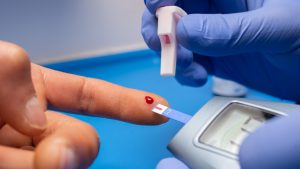Prediabetes is a term that can often lead to misunderstanding and misinformation. Clearing up these myths is essential for empowering individuals to take control of their health. In this blog, we’ll explore some common misconceptions about prediabetes and highlight the realities to foster a more informed perspective.
Myth 1: Prediabetes Means You Will Definitely Get Diabetes
Reality: Prediabetes is a warning sign, not a guaranteed outcome. While it indicates that blood sugar levels are higher than normal, it’s also a crucial opportunity for change. Many individuals who are diagnosed with prediabetes can reverse this condition through healthy lifestyle changes, such as improving their diet, increasing physical activity, and losing weight.
Myth 2: Only Overweight People Can Develop Prediabetes
Reality: While being overweight is a significant risk factor, prediabetes can affect individuals of all body types. Factors such as genetics, age, and lifestyle play a critical role in the development of insulin resistance. Even those who appear to be at a healthy weight can have prediabetes, which is why regular check-ups and blood tests are vital for everyone.
Myth 3: Prediabetes Has Obvious Symptoms
Reality: Many people with prediabetes experience no noticeable symptoms at all. This silent nature of the condition can make it easy to overlook. It’s essential to be aware of risk factors and to get tested regularly, even if you feel perfectly healthy. Early detection is key to preventing the progression to type 2 diabetes.
Myth 4: If You Have Prediabetes, You Can’t Enjoy Your Favorite Foods
Reality: Living with prediabetes doesn’t mean you have to give up all your favorite foods. Instead of strict restrictions, focus on moderation and balance. You can still enjoy treats and comfort foods by incorporating them into a well-rounded diet. The goal is to make healthier choices most of the time while allowing yourself the occasional indulgence.
Myth 5: Exercise Is Only Important for Weight Loss
Reality: While maintaining a healthy weight is important, exercise offers numerous benefits beyond weight management. Physical activity improves insulin sensitivity, helps regulate blood sugar levels, boosts energy, and enhances mood. Engaging in regular exercise is beneficial for everyone, regardless of weight, and can be a vital part of managing prediabetes.
Myth 6: Once You Have Prediabetes, You Can’t Change Your Situation
Reality: This is perhaps the most empowering reality: prediabetes is a condition that can often be reversed. With commitment and proactive changes, many individuals have successfully lowered their blood sugar levels and improved their health. Focusing on small, achievable goals can lead to significant long-term improvements.
Myth 7: Prediabetes Is Only a Concern for Older Adults
Reality: While the risk of prediabetes increases with age, it can develop in younger adults as well. Factors such as lifestyle choices, family history, and certain medical conditions can contribute to the risk. It’s crucial for individuals of all ages to be aware of their health and get regular screenings.
Conclusion
Understanding the myths and realities surrounding prediabetes is vital for fostering awareness and encouraging proactive health measures. By dispelling misinformation, we empower ourselves and others to take charge of our health journeys. If you or someone you know is at risk for prediabetes, remember that it’s never too late to make positive changes.
Encourage your readers to stay informed, seek regular check-ups, and adopt healthier habits. Invite them to follow you for more insights and tips on managing prediabetes and promoting overall wellness.

Type 2 Diabetes: Is It Really Reversible?
A recent National Geographic article [link] explores how type 2 diabetes could be reversible with the right approaches. This condition, which affects millions of people worldwide, has long been considered a chronic and progressive disease. However, recent research challenges this perception and suggests that with lifestyle changes and the right approach, remission is possible. The

How Do GLP-1 Drugs Compare? A Breakdown of Ozempic, Mounjaro, and Trulicity
GLP-1 receptor agonists have revolutionized diabetes management, with drugs like Ozempic, Mounjaro, and Trulicity leading the market. But how do these medications compare in terms of effectiveness, side effects, and patient outcomes? Let’s explore their differences and what they mean for diabetes patients. Understanding GLP-1 Medications GLP-1 receptor agonists mimic a natural hormone that helps

Why Has Medicare Spending on Diabetes Medications Skyrocketed in 5 Years?
In the past five years, Medicare spending on diabetes medications has increased nearly fivefold, reaching $35.8 billion in 2023. This surge has been primarily driven by the growing use of GLP-1 drugs such as Ozempic, Mounjaro, and Trulicity. But what is behind this cost escalation, and how does it affect patients and the U.S. healthcare

The Gut Microbiota and Blood Sugar Control: A Hidden Connection
The human gut is home to trillions of bacteria that play a crucial role in digestion, immune function, and even metabolism. Recent research has revealed a fascinating link between the gut microbiota and blood sugar regulation, shedding light on how the balance of microbes in our intestines can influence diabetes risk and overall metabolic health.

The Dawn Phenomenon: Why Blood Sugar Rises While You Sleep
For many people with diabetes, waking up with high blood sugar levels can be frustrating—especially if they didn’t eat anything overnight. This early-morning spike in blood glucose is known as the Dawn Phenomenon, and it happens due to natural hormonal changes in the body. But why does it occur, and how can it be managed?

The Influence of Red Light on Blood: Can It Improve Diabetes?
Type 2 diabetes is a metabolic disease characterized by insulin resistance and elevated blood glucose levels. In the search for complementary alternatives to improve glycemic control, red light therapy has gained attention due to its potential to enhance circulation, reduce inflammation, and optimize cellular function. But what does science say about it? ✨ What is

